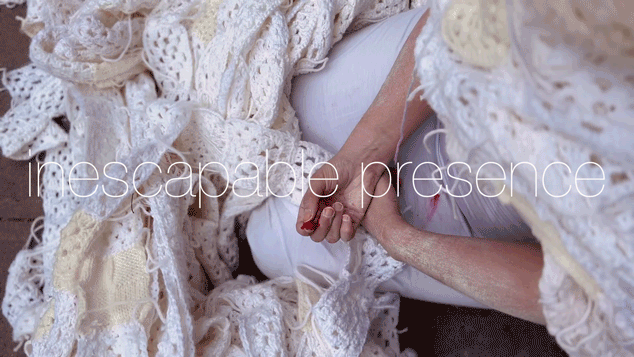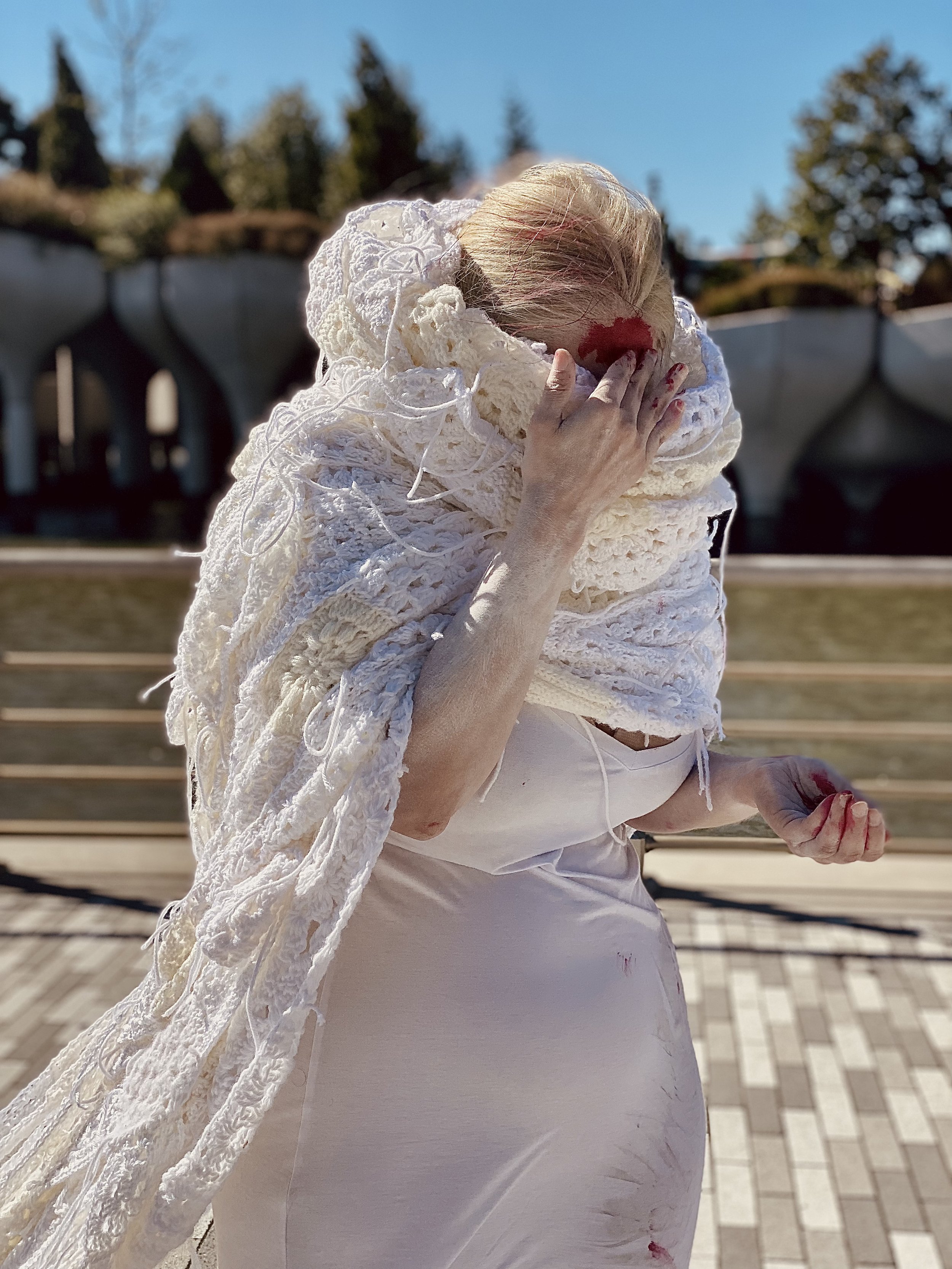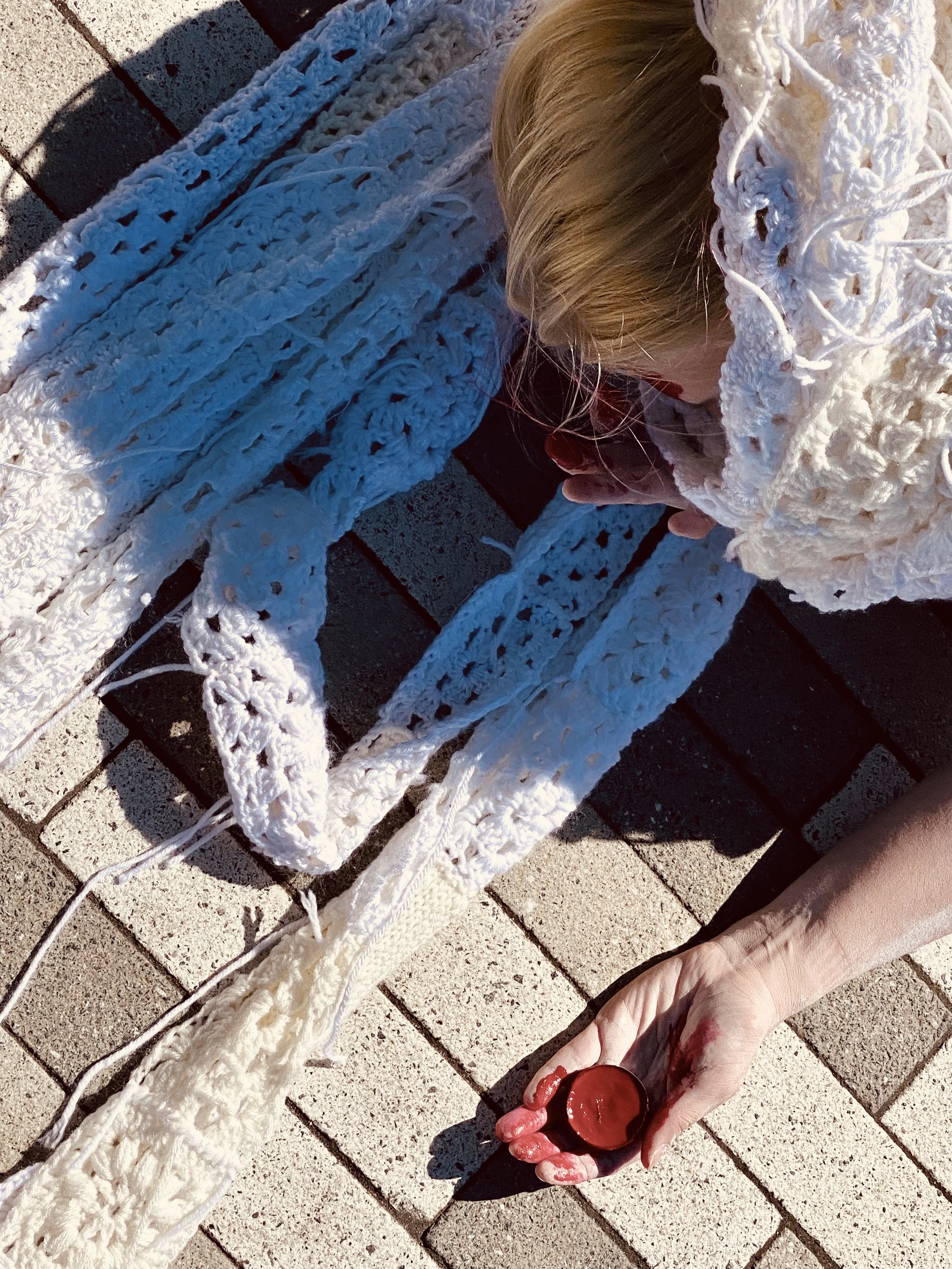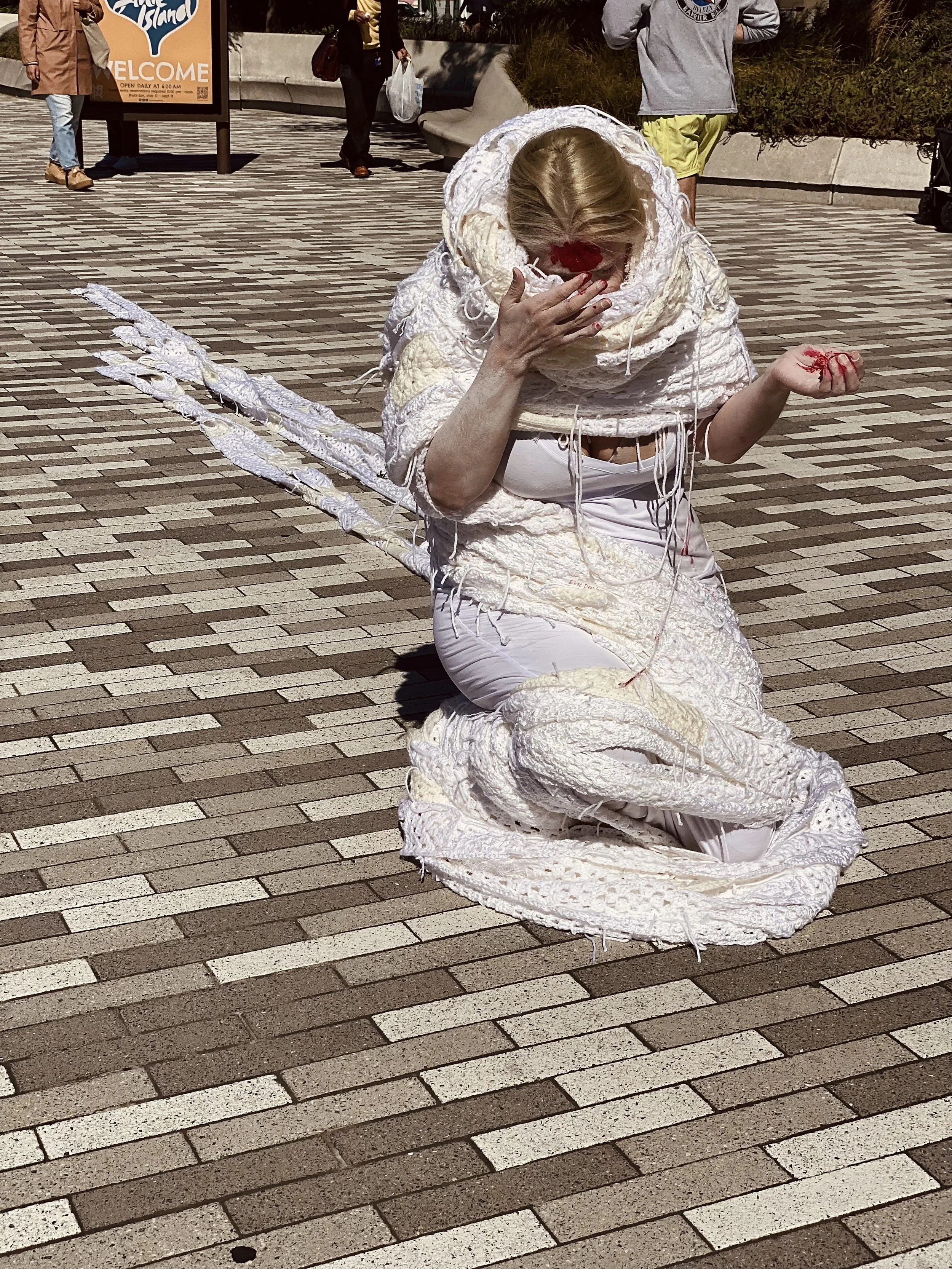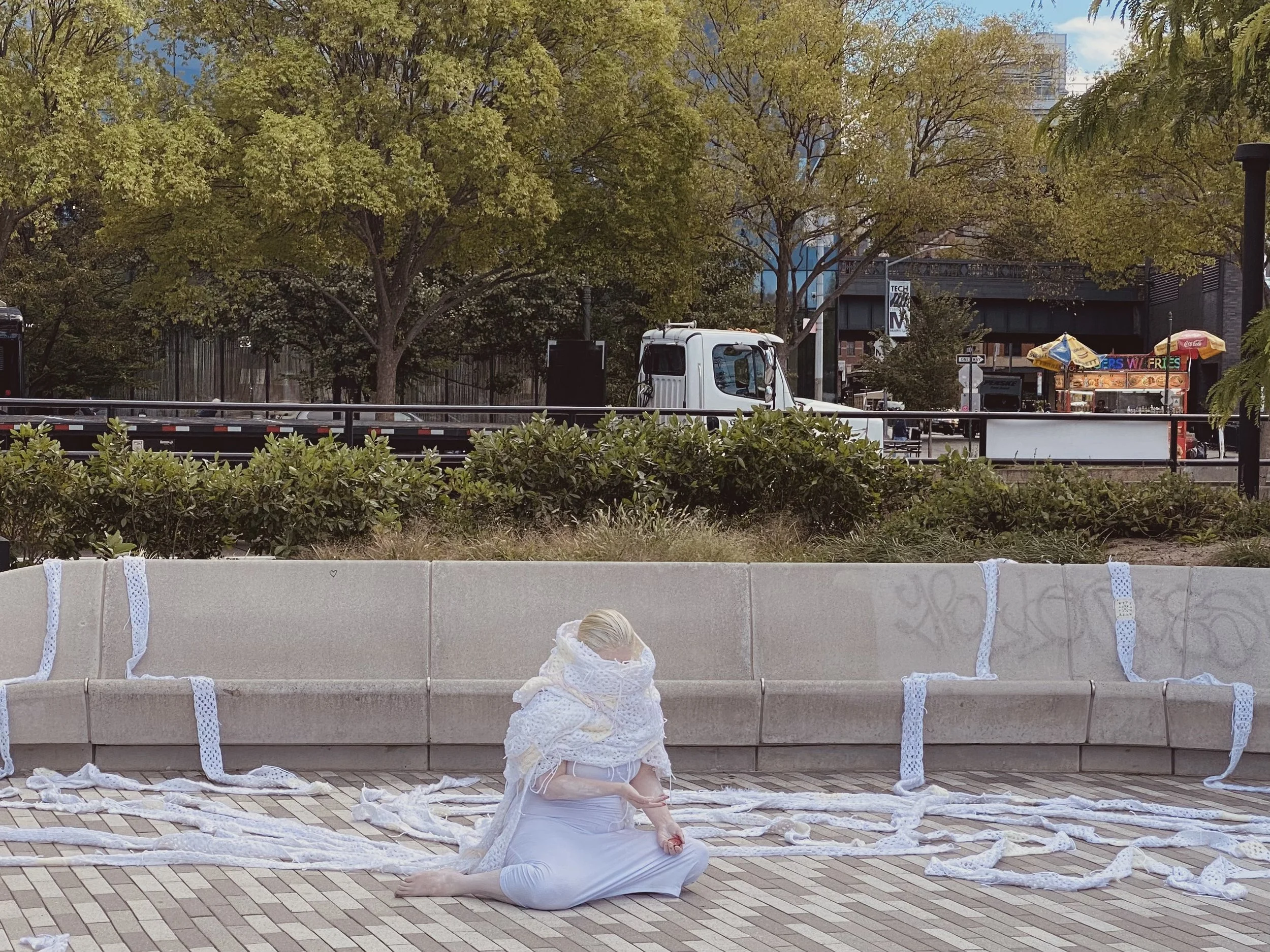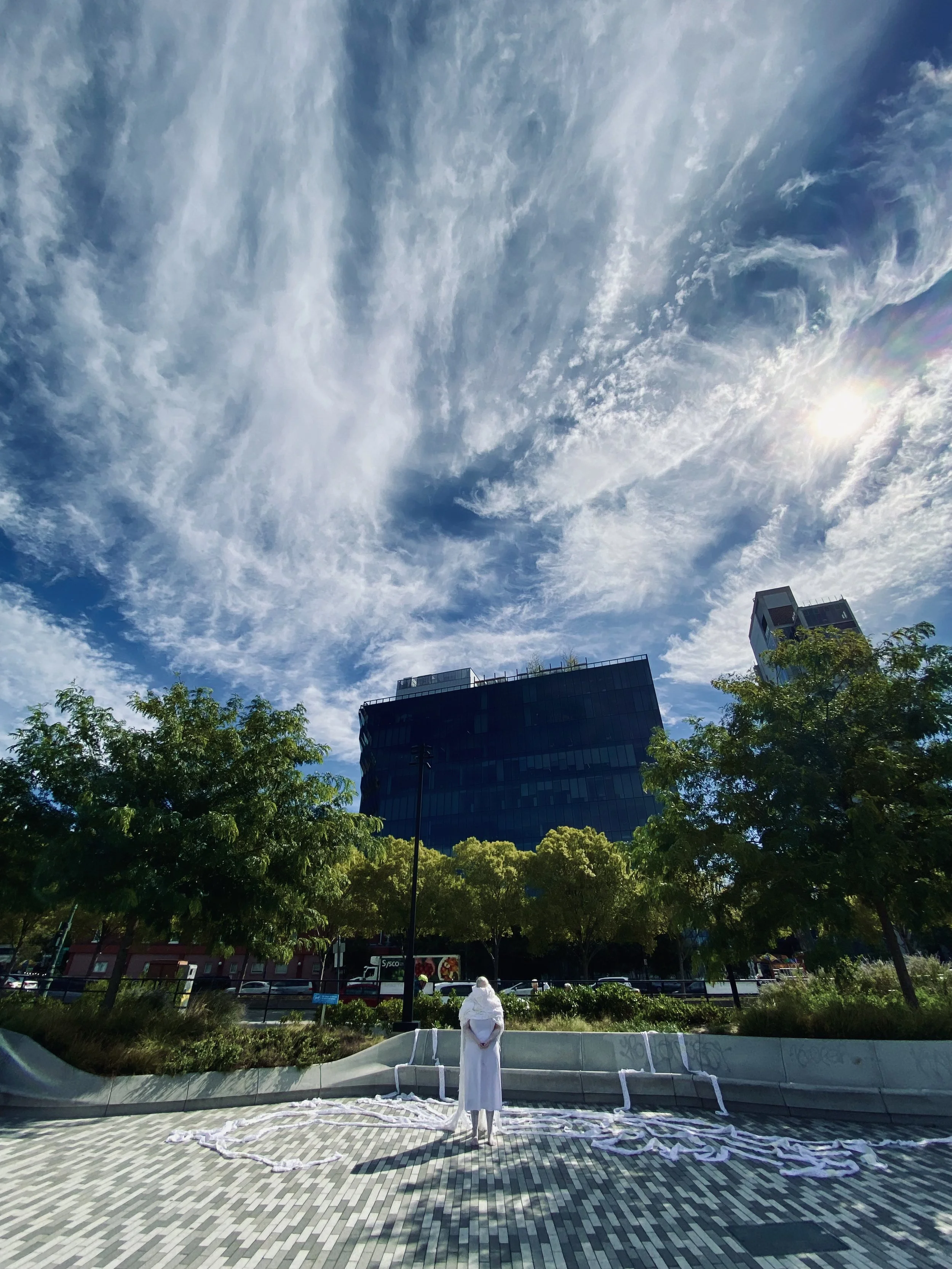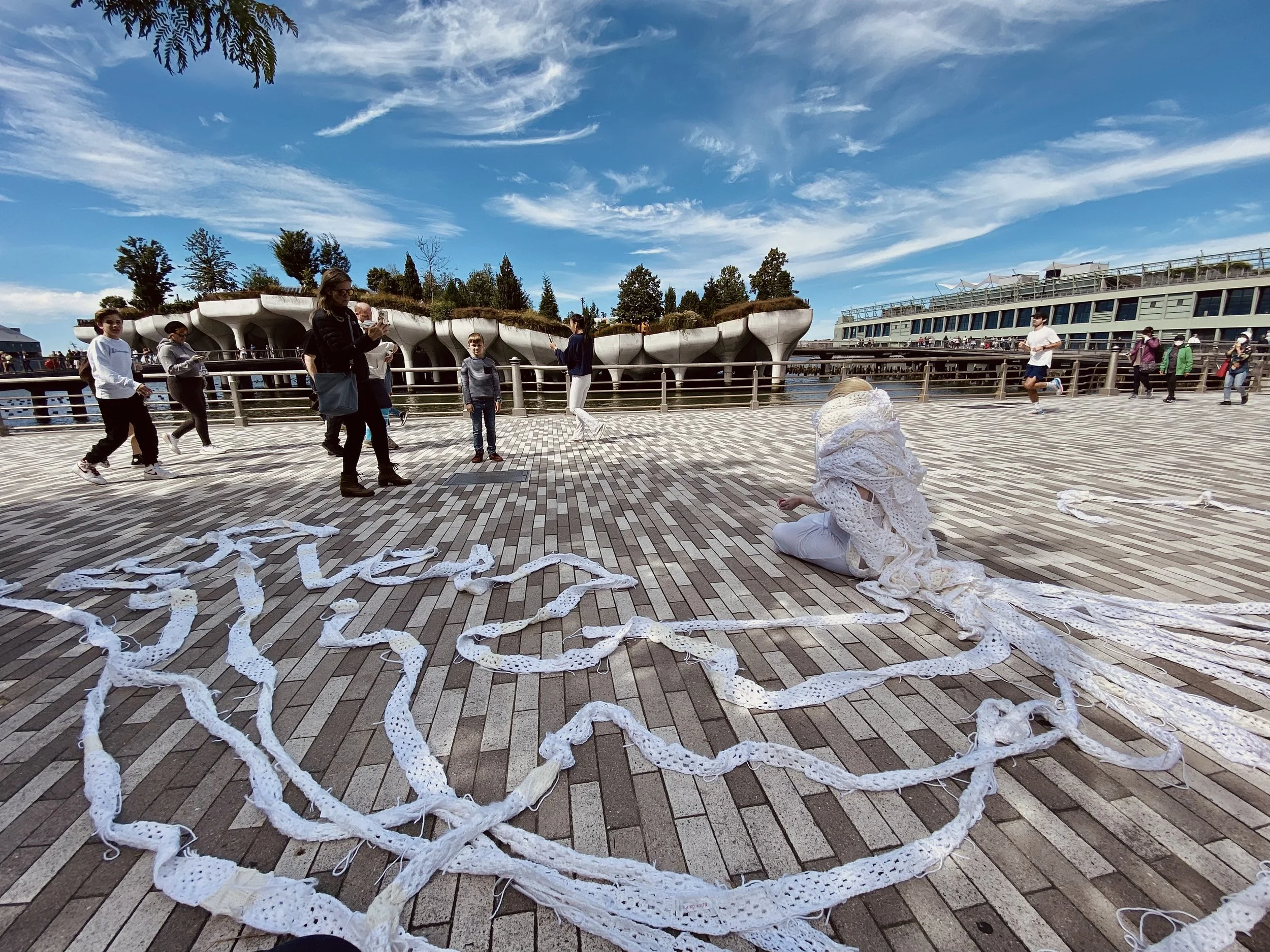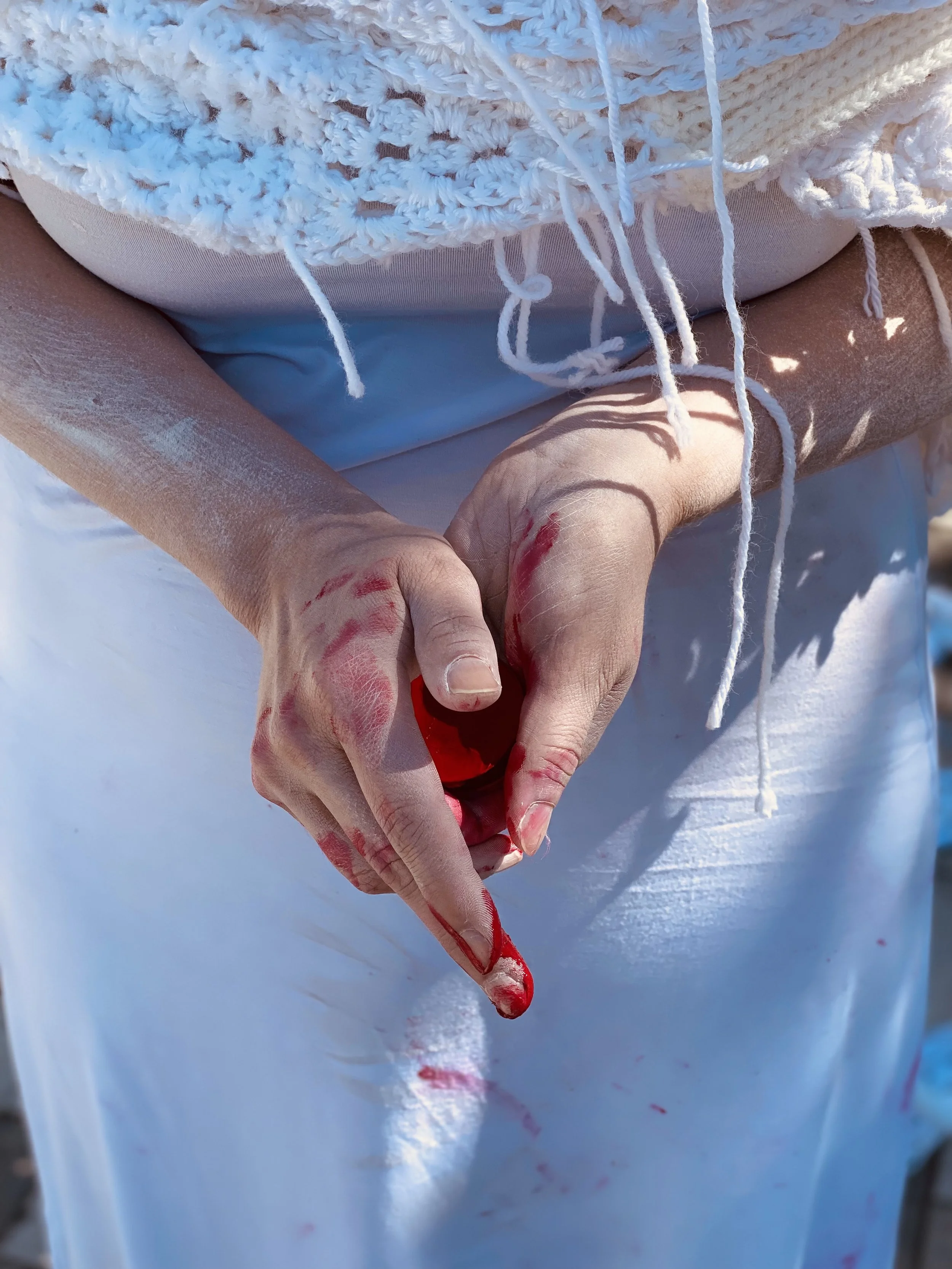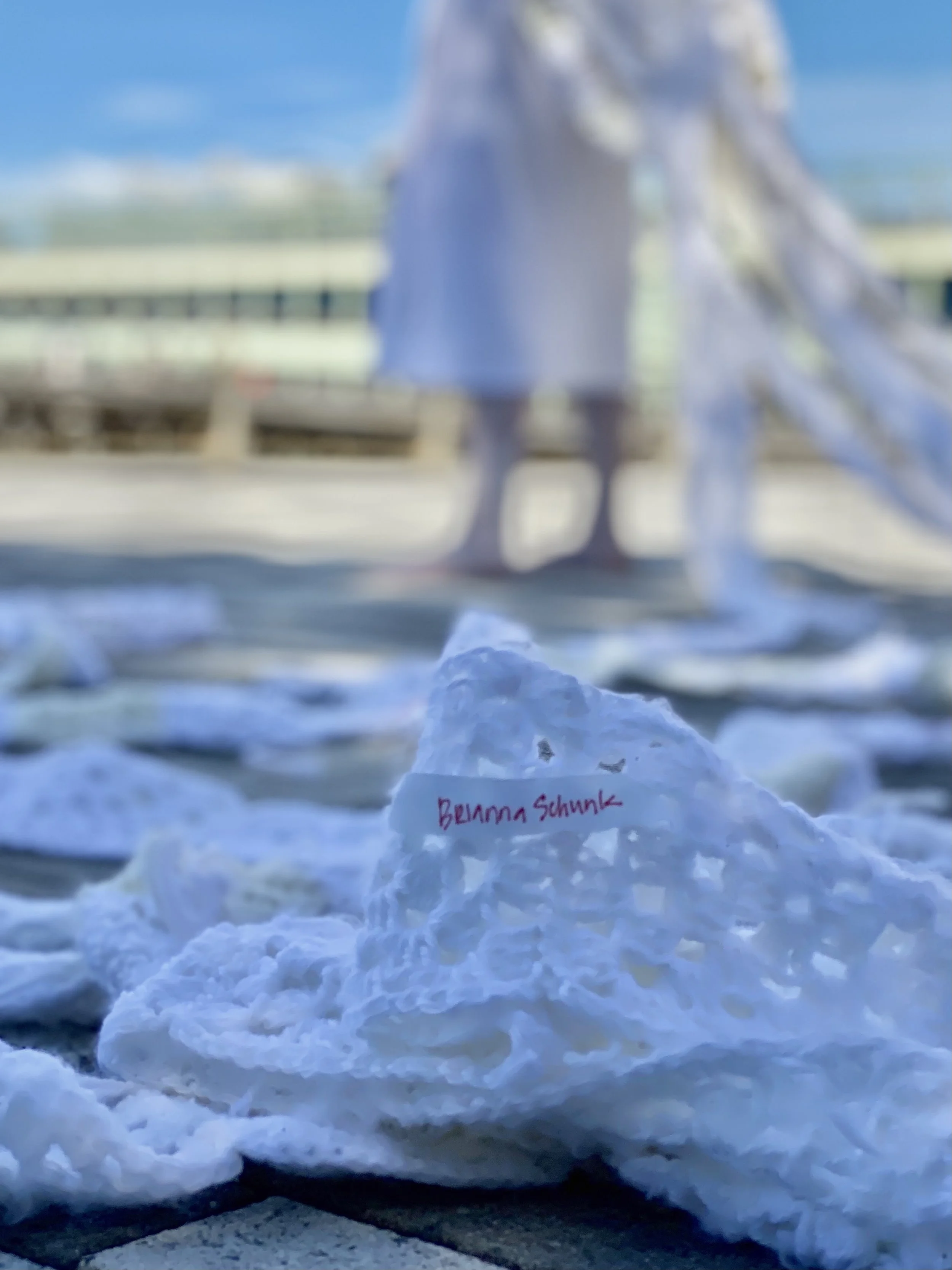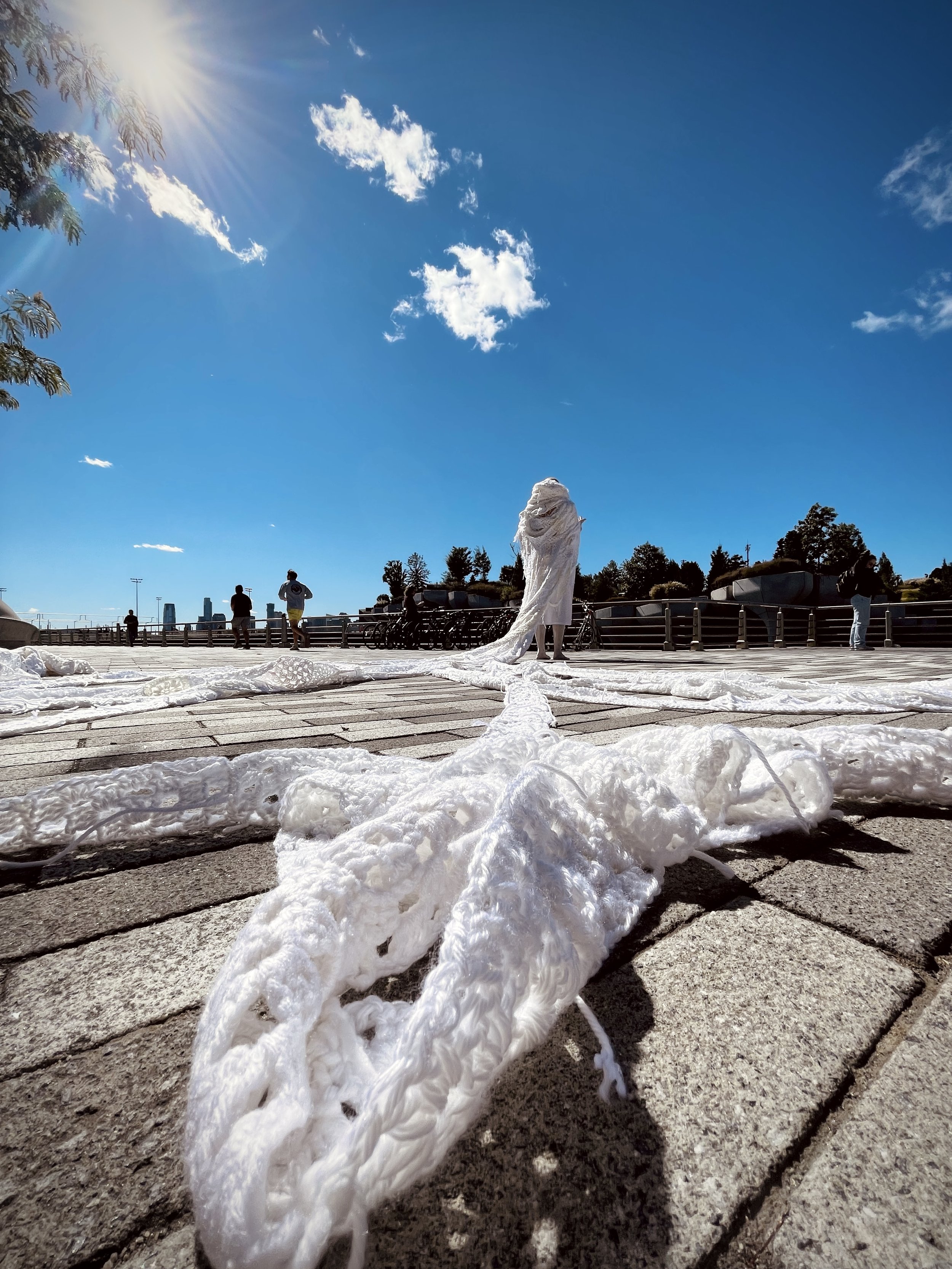INESCAPABLE PRESENCE: Abuse happens usually within the home and without a community. Historically, women have built communities through common interests. As a culture, we recognize sewing circles which were gatherings of mostly women who regularly meet for the purpose of sewing, particularly for charitable causes. Intimate Partner Violence {IPV} isolates victims from others. What an IPV victim lacks is a community.
‘Inescapable Presence’ is a performance intervention that addresses the ever-presence of intimate partner violence (IPV). As someone who has experienced IPV, I use myself and my experiences as a case study to disclose the ongoing ramifications of abuse. For me, recognizing I was in a precarious situation took some time to realize. I kept the emotional manipulation, gaslighting, and physical altercations private. Once I was able to become self-aware enough that this was not a healthy situation, I asked for help from a few close friends who knew “us” as a couple. This fell on deaf ears when I was not believed, and thus felt abandoned, helpless, and isolated. That reality is a common one as 1 in 4 women experience IPV throughout their lifetime.
I never imagined that I would become part of this ‘Me Too’ community. I thought I would be able to distinguish right from wrong and if faced with a situation of injustice, I would know what is best for me. Because that was not the case, it is important to me that I represent the complexities of abuse, but also, that the reverberations of abuse extend far beyond when the physical wounds heal. By virtue of existing, it is an act of endurance and THIS is women’s work.
IPV victims are continually silenced. Women are not encouraged to speak out about their abuse and when they do, they experience victim blaming and slut shaming. As such, women lose. In many cases, they lose access to their family, home, financial stability, and professional advancement. Furthermore, health is compromised due to the trauma that changes the hypothalamic-pituitary-adrenal axis leaving victims susceptible to autoimmune illness and compromised mental health. Furthermore, due to the difficulty of diagnosing autoimmune illnesses, the worst-case scenario culminates into more serious, life-threatening illnesses such as cancer, or in the least, they feel terrible and don’t know why. Talking about illness is not taken with the seriousness it should and therefore women are not empowered to care for themselves due to the worry about how it might impact them professionally and financially.
This performance is centered around that silenced cry for help and its ramifications. Important to this work was the representation of community. People were invited to participate in the sewing circle that would create the garment I wear. This is a community who are coming together as an act of healing and growth. This garment was created from ‘granny square’ contributions of women from across the United States, Canada, and the UK.
The performance consists of taking up space due to the volume of the garment and tapping morse code on my forehead as a plea for help. Each tap will leave a red mark, accumulating to a large visible smirch or stain. Like when I experienced abuse, it was apparent that I had changed however when someone could do something about it, they didn’t. As a result, my goal for this work is to recognize the obvious call for help. My use of morse code which is a tactical form of communication used by the military, suggests that while essential information is shared, it is exchanged with people who are in the position to understand. For many, they will not.
This walk had its struggles. It was not easy to negotiate the blanket garment and often it was a spectacle for others to either ignore or take pictures of but none directly engaged with me even as I reached out to them. The performance– conducted in three chapters– began with struggles and pleas; then my trauma stoically holding space as an obstacle; finally carrying my community and burden with me. The morse code, tapped over the three days– went from my forehead to my forearm, to my fingers– a deafening reminder of silence even when one asks for help.
Performed for Art in Odd Places, along 14th St. New York
Dates & Duration:
Chapter 1- Call for Help: Hudson River Greenway, September 23, 2022, 1 hour
Chapter 2- Taking Up Space: Hudson River Greenway, September 24, 2022, 2 hours
Chapter 3- Carrying My Burden: Entrance to the Highline, September 25, 2022, 1 hour
Thank you to the makers who contributed to the performance garment. It would not have been possible without them. (Please note some makers chose to remain anonymous)
Alice Erickson
Andrea
Brianna Schunk
Deb Davis
Dragana Bogavac
Elise Drozdowski
Emily Newell
Jean C Adams
Jeannette C. Lang
Jeannette Griffiths
Karen Padden
Kati Christoffel
Kayla Fuller
Kelly Clisham
Linda Rae Dornan
Marie Sincavage
Mary Lou Steinberg
Melissa Carestia
Nicole Karr
Patti Nauman
Rebecca Elfman
Shirley Greenawald
Victoria Karlsson
